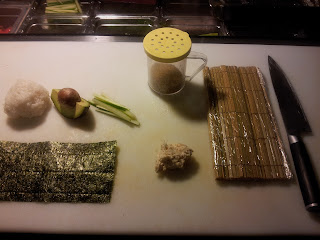Hey guys, I'm posting a recipe for Saba, or cured Mackerel. You can find this at pretty much every sushi bar around and it's very simple.
First off:
There are a lot of types of Mackerel out there, but this one is Atlantic Mackerel. Mackerel are very oily fish, so they are high in Omega-3 fatty acids. However they can spoil very quickly so they are commonly preserved, but fresh Mackerel is very delicious too!
In sushi bars Saba is easily recognizable because of it's color, smell and taste. Some have an extremely fishy smell, but if cured right it's not so bad. Usually pre-packaged Saba has stronger smell and taste which can be too much for some people.
You will need:
Saba (cleaned)
Salt
Sushi Vinegar
Kombu (dried kelp)
Place the Saba in a container and generously cover both sides with salt.
Cover the fish and refrigerate for 2 hours!
After two hours is up, clean the salt off and place back in the container.
Pour in enough vinegar to cover the fish. (They will float a little, but that's ok.)
Along with the vinegar add a piece of Kombu. For most recipes using kombu you usually use a piece roughly the size of your palm.
Cover the container again and place back in the refrigerator overnight.
When you come back in the morning you will notice a color difference and change in the texture of the fish. I wrapped the saba in paper towel for a few minutes to remove the excess vinegar.
Don't forget that some further cleaning is required.
The fish will still contain some pin bones (unless earlier removed) and a top layer of skin should be peeled off. You will still see the blue and silver color even after removing the skin.
Now it's done! :D
This has a salty flavor, but by doing it on your own you have more ability to control that. It's best served with a little grated ginger, green onion and ponzu.
Enjoy <3










